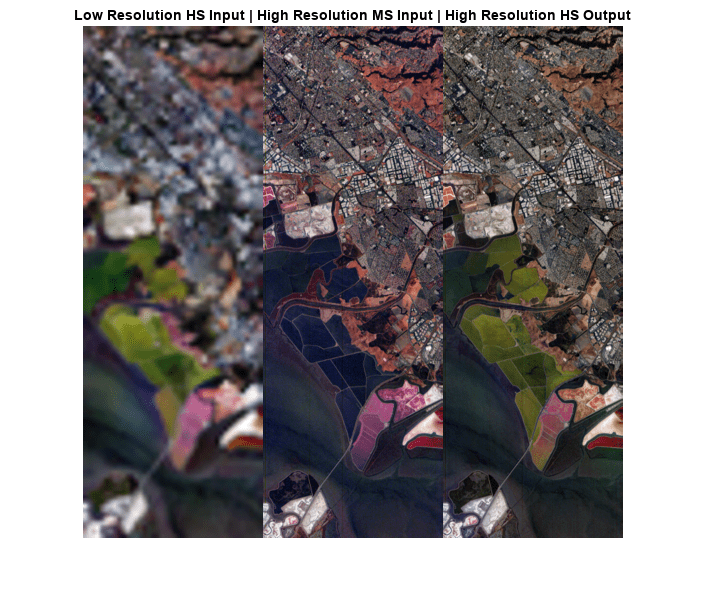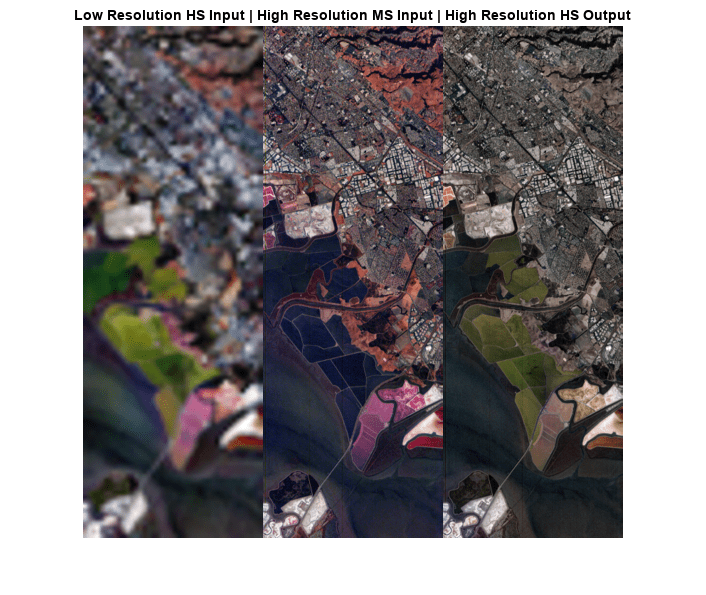sharpencnmf
Sharpen hyperspectral data using coupled nonnegative matrix factorization (CNMF) method
Description
outputData = sharpencnmf(lrData,hrData)lrData of a scene by
using coupled nonnegative matrix factorization (CNMF) method. The CNMF method is an
iterative approach that uses the high resolution multispectral or panchromatic data,
hrData of the same scene for sharpening the hyperspectral
data.
Hyperspectral image sharpening increases the spatial resolution of a hyperspectral data by fusing information from a high resolution multispectral data or a panchromatic data. The sharpening process is also called as image fusion (fusing multispectral and hyperspectral data) or pan-sharpening (fusing panchromatic and hyperspectral data).
Note
The spatial dimension of the hyperspectral data must be less than the spatial dimension of the multispectral or panchromatic data.
The number of spectral bands in the hyperspectral data must be greater than the number of bands in the multispectral data. For panchromatic data, the number of spectral bands is always 1.
outputData = sharpencnmf(lrData,hrData,Name=Value)
Note
This function requires the Hyperspectral Imaging Library for Image Processing Toolbox™. You can install the Hyperspectral Imaging Library for Image Processing Toolbox from Add-On Explorer. For more information about installing add-ons, see Get and Manage Add-Ons.
The Hyperspectral Imaging Library for Image Processing Toolbox requires desktop MATLAB®, as MATLAB Online™ and MATLAB Mobile™ do not support the library.
Examples
Input Arguments
Name-Value Arguments
Output Arguments
References
[1] Yokoya, Naoto, Takehisa Yairi, and Akira Iwasaki. “Coupled Nonnegative Matrix Factorization Unmixing for Hyperspectral and Multispectral Data Fusion.” IEEE Transactions on Geoscience and Remote Sensing 50, no. 2 (February 2012): 528–37. https://doi.org/10.1109/TGRS.2011.2161320.
Version History
Introduced in R2020bSee Also
countEndmembersHFC | hypercube | multicube | nfindr | ppi

